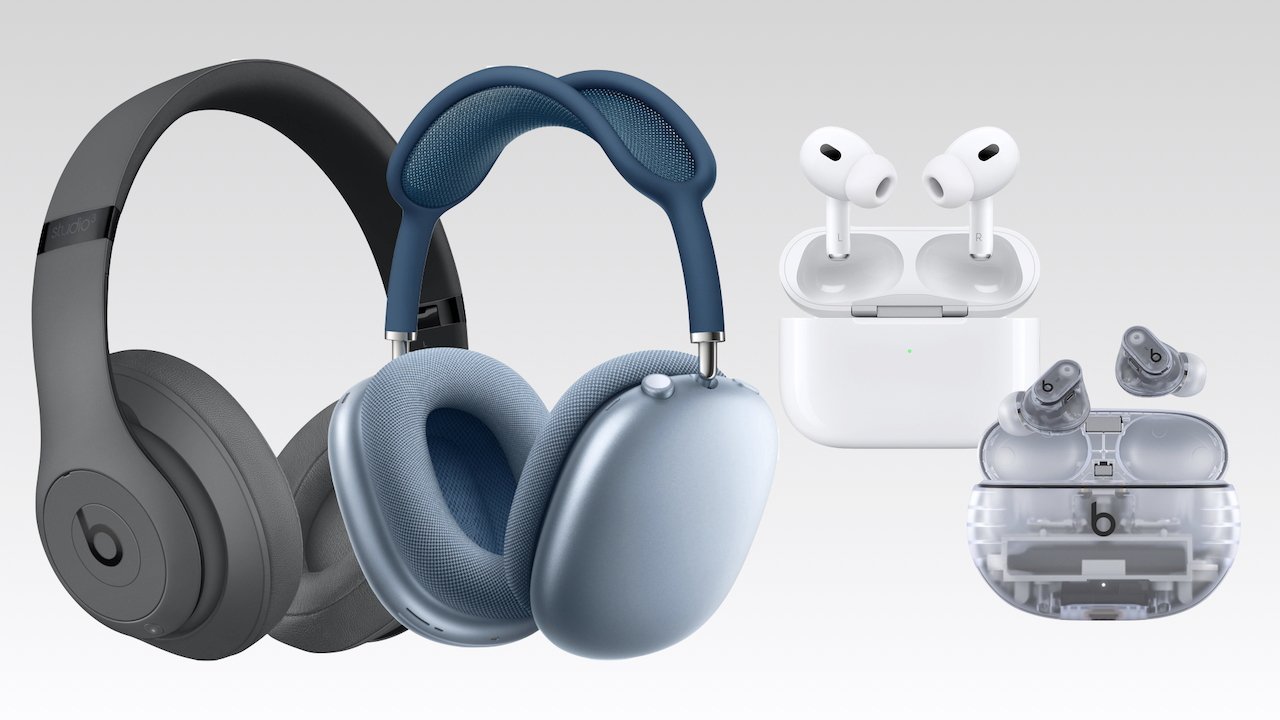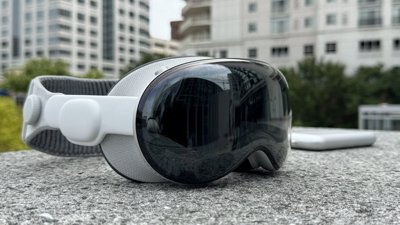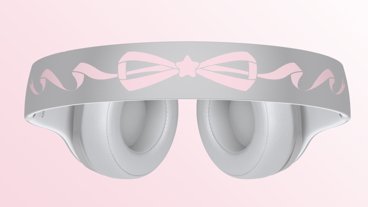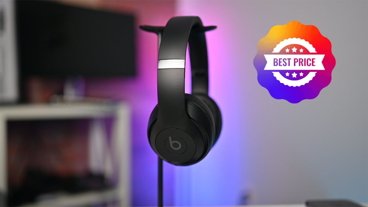There's no need to put up with a noisy travel environment. Apple headphones and products from its Beats subsidiary are great products that help the miles roll by in comfort, and these are your best choices.
Trains, planes, and automobiles — or ferries for that matter — can all make for a cacophonous way to get to your destination. If you're not the engineer, pilot, driver or captain of your mode of transport, you can make the journey pass by much more pleasurably by listening to music, podcasts, or audiobooks, even if you're also catching up on some reading or office work.
There are, of course, a number of third-party companies that make premium over-ear headphones and earbuds that have excellent Adaptive Noise Cancellation — a key feature for enjoying one's travel time. We'd be remiss if we didn't mention competitors like Bose, Bowers & Wilkins, Sennheiser, and Sony among others.
That said, for full immersion into the Apple ecosystem, nothing beats Apple — and Apple's Beats lineup — for the best integrated experience.
Best over-ear Apple headphones for traveling: AirPods Max and Beats Studio3 Wireless
If you need over-ear headphones with excellent ANC, there are two options made by Apple: the AirPods Max, and the Beats Studio3 Wireless.
The AirPods Max, as Apple's most premium headphone, of course has some advantages over Beats' wireless offering. For example: if you're really into the increasing catalog of Spatial Audio, the AirPod Max's dynamic head tracking makes a big difference.
Other significant advantages for the AirPods Max on the software side include an ambient mode, Bluetooth 5.0, Adaptive EQ, and the hearing-assistive Live Listen feature. On the other hand, Beats Studio 3 Wireless has much better Android support, a well-balanced amount of extra "oomph" for bassand also a source-sharing feature that works with certain other Beats headphones, or AirPods.
Contrary to its reputation from years ago, the bass on these Beats headphones are not set at subwoofer-cranked-to-11 levels. To be sure, the bass has a bit more "oomph" if it is prominent in the audio you're listening to, but the overall balance actually favors the midrange and highs if it's not.
Hardware-wise, the Beats Studio3 Wireless come with a detachable cable for wired use, where the AirPods Max do not — though you can buy a $35 Apple Lightning-to-3.5mm audio adapter to add that wired capability. Another advantage — the Beats cups fold up to fit into its protective, padded case — whereas the AirPods Max's included case needs a rethink.
That aside, another great hardware feature of the AirPods Max is the Digital Crown for volume control and other features, plus there are more microphones for better noise cancellation. The Beats Studio3 makes clever use the Beats logo on the side for volume and call-management functions, but the tactile nature of the Digital Crown just feels better.
It should be said that AirPods Max generally have held up surprisingly well over time, and that they are notably heavier (385g/13.6oz) compared to the Studio3 Wireless (260g/9 oz).
Most AirPods Max owners would say that Apple's design distributes the extra weight pretty well. But on an especially long road trip or flight, the lighter Beats Studio3 Wireless would probably be preferred.
When it comes to the all-important battery life, the Beats Studio3 Wireless again win out, with up to 22 hours on a single charge with ANC on, versus the AirPods Max's up to 20 hours with ANC on. With ANC off all the time, you should expect up to 40 hours with the Beats, while only up to 30 hours with the Max.
It's a bit annoying that the AirPods Max haven't been upgraded since first appearing in 2020, meaning they rely on a Lightning-to-USB-C connector for charging and wired use. That said, the Beats Studio3 Wireless come with a micro-USB to USB-A charging cable, making them a bit difficult to work with if you charge them using modern Macs.
The AirPods Max retail for $549, though you can often find them significantly discounted on Amazon or other websites. Meanwhile, the Beats Studio3 Wireless go for just $350, which makes for an especially strong argument for Android users and budget-conscious Apple users who don't require some of the Max's extra features.
Best Apple Earbuds for traveling: Beats Studio Buds+ and AirPods Pro 2
Beats just recently refreshed the Beats Studio Buds, adding a + to the name, which signifies improved ANC, 3x larger microphones, and a new transparent bud and case option. Likewise, the AirPods Pro second-gen saw much-improved ANC and on-device volume control, but otherwise largely stuck to the style and functionality of the first generation.
As with the respective over-ear headphones from the two brands, the Beats option is notably less expensive than the AirPods Pro gen 2 — $170 versus the AirPod Pro's $249 price tag — but are feature-light by comparison. The Beats products continue to use their own in-house custom chips, rather than the Apple-designed H2 and U1 chips — the latter of which gives the AirPods Pro charging case Find My compatibility.
Again as with the larger headphones, the Beats Studio Buds+ beat out the AirPods Pro second-gen in terms of battery life. The AirPods offer seven hours on a single charge with ANC off, and six hours with it on, and 30 hours total with the charging case, whereas the Studio Buds+ can handle up to nine hours with ANC off, six hours with it on, and 36 hours total.
Both sets weigh about the same, both have an IPX4 rating for water and dust resistance, and both have USB-C charging and Spatial Audio support — though the AirPods Pro also have dynamic head tracking. Both charging cases are Find My compatible, support Siri, and both offer a "Fast Fuel" feature where 10 minutes of charging will allow up to three hours more listening.
The latest version of the AirPods Pro also now feature a volume control on the stem activated by moving one's finger up or down along it, and the case also supports wireless charging and MagSafe. They also offer features not found on the Beats, such as adaptive transparency, the Live Listen feature, lanyard loop support, Apple Watch charging, and a built-in speaker on the charging case.
The Beats Studio Buds+ have three silicon tip options compared to four for the AirPods Pro, yet because of their different design and shorter stem, the Buds+ are considered more comfortable for some people. While the transparent case and buds design in the new version has caught the imagination of new buyers, the case does not offer wireless charging or MagSafe, and we've found the buds are harder to get in and out of the case than the AirPods Pro.
Beats Studio Buds+ cost $170, and can be bought from Amazon and other retailers.
Apple's AirPods Pro Gen 2 are available at many retailers, including Amazon, for $249.
Tune out da noise, tune in da funk
When it comes to traveling, comfort and ANC are the two big factors users are looking for. Among the offerings from Apple and its Beats division, there's no clear winner — except in the price, Android compatibility, and battery life, where the Studio3 Wireless option handily takes the prize. On the other hand, the AirPods Max and Pro have strong built-in design points and ecosystem features that the Beats just can't match.
Despite some clear differences, all four of these products offer excellent ANC and strong, clear reproduction of sound — including Spatial Audio when available. The blocking of ambient noise makes it easy to immerse yourself in the audio you are listening to — but can easily be turned off if your attention to your environment is suddenly needed.
The over-ear headphone options are ideal for when you are find yourself in a particularly noisy environment — from planes and trains to rollicking restaurants or construction-caused chaos. The earbud options are better suited for where noise cancellation is preferred for concentration, but not a matter of hearing protection, since the seal of earbuds is never going to match that of over-ear, ambience-blocking headphones.
For the budget-minded, the Beats options come close enough in most ways to meet most criterias — it is a tough call to pick one over the other. However, the better battery life in the Beats options is real, and can be more important to some than the extra features of the AirPod options.
The AirPods Max in particular, though feel and look fashionable and luxurious, with touches that just about justify their price tag. We also found the improved ANC in the second-generation was just better enough to tip the balance for those who can afford the extra cost.
If we had to make a single choice in each category, we'd have to admit that the Beats Studio3 Wireless would "win" for over-ear. The lower price and competitive features make it a better value, and both the Beats brand and the distinctive design of the AirPods Max each carry their own cachet — but more importantly, we'll never be embarrassed by the case for the Beats.
The cost savings for the Beats Studio Buds+ — or even that cool transparent option — don't quite win us over in the earbuds category, though. We definitely preferred the new volume-control feature on the stem over having to ask Siri, or control the volume on our iPhone or Watch — as you must do with the Studio Buds+.
Another important detail that really made a difference in testing was the "in ear" detection on the AirPods Pro, which is what makes the music pause when you take a bud out of your ear. The Beats Studio Buds+ didn't have this feature, which surprised us.
There's also the convenience of wireless Qi or MagSafe charging with the AirPods Pro charging case. When it came to testing phone conversations using both of the earbud competitors, the microphones on the AirPods Pro still beat the brand new mic on the Studio Buds+.
In addition, if you drop your Buds+ into a lake or swimming pool, only the buds are IPX4 rated — not the case. The AirPods Pro have overall better water resistance.
As for the sound of the four options, we tended to feel that the soundstage of the AirPods Max and AirPods Pro was less "sculpted" than the Beats options. The Beats sound was more "punchy" on the highs and lows, while the AirPods had an all-around "warmer" sound to us.
We mentioned it earlier, but one last reminder: if you're an Android user or buying these for an Android user, you want the Beats products in both categories. Although the AirPods pair just fine with an Android device, only the Beats products have full Android app support to leverage all of their features.
It's great that two sets of products from two different parts of Apple have maintained their separate "identities" and remain distinct to their overlapping-but-still-different markets. When it comes to Bluetooth headphones with ANC, buyers have a diverse range of excellent options — and Apple's and Beats' offerings are right in there with extremely competitive choices.
 Charles Martin
Charles Martin












 Marko Zivkovic
Marko Zivkovic
 Malcolm Owen
Malcolm Owen


 William Gallagher
William Gallagher
 Amber Neely
Amber Neely
 Sponsored Content
Sponsored Content



-m.jpg)





